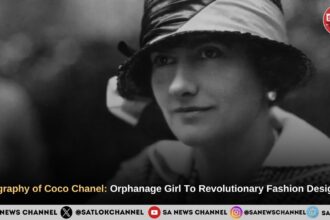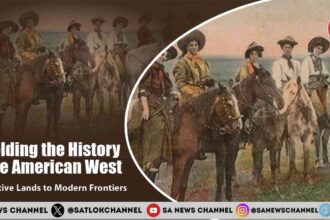If mastering emotional expression is an art, then Vincent van Gogh is surely the artist! His artworks open windows to the mind and emotions of the inner worlds. Van Gogh’s every artwork—sunflower, swirling sky and the moon, the peasant—everything depicts his deep expressionism of different worlds. Van Gogh faced struggles with mental health, experienced poverty, and made artistic breakthroughs throughout his life, but had the courage and talent to brush it all in his paintings. Discover in the blog his life journey and the struggles of the artist.
- Vincent Van Gogh’s Initial Years and Background
- Vincent Van Gogh’s Initial Artistic Years
- Various Artistic Phases of Vincent Van Gogh
- Dutch Period (1880–1885):
- Paris Period (1886–1888):
- Arles Period (1888–1889):
- Saint-Rémy and Auvers-sur-Oise (1889–1890):
- Mental Struggles and Famous 1888 incident:
- Famous Works Of Van Gogh
- True Worship, Not Suicide is the solution to problems
- Connect With Us on the Following Social Media Platforms
Vincent Van Gogh’s Initial Years and Background
Born on March 30, 1853, in the village of Groot-Zundert, Netherlands, Vincent van Gogh was the eldest surviving child of his parents. His father, Theodorus van Gogh, was a Protestant minister and mother, Anna Cornelia Carbentus belonged to a wealthy family in The Hague. Van Gogh’s early childhood days were spent in a loving family of three sisters and two brothers. Theo was Van Gogh’s beloved younger brother, who later became his supporter.

Vincent Van Gogh’s father Theodorus was a pastor and mother Anna helped instill in their children the social standing and love for nature. During his early days, their family took frequent trips to the countryside which nurtured his affection towards nature that later permeated his art. In his early days, Van Gogh was a quiet and sensitive child. He used to draw occasionally, but he didn’t show any sign of his later artistic genius during his initial years.
Vincent Van Gogh’s Initial Artistic Years
Vincent Van Gogh initially learned his art while experimenting and gradually mastering it. His mother and his school art teacher Constant Cornelis Huijsmans influenced his interest towards art. Vincent Van Gogh had little formal education. He attended Koning Willem II College in Tilburg, but did not write much about this phase layer in life.
Vincent Van Gogh did not continue his formal education. He started working with the art dealer Goupil & Cie when he was sixteen. Here, he was exposed to artworks by masters like Rembrandt, Millet, and Corot which inspired him towards art. In his later twenties, he tried many careers to support his finances such as a language teacher and bookseller, evangelist and missionary worker but nothing worked. It was only later that Van Gogh committed to becoming an artist.

Vincent Van Gogh started his artistic career with simple drawing and watercolor techniques. He used to copy prints and study manuals to learn perspective and anatomy. His brother, Theo supported him both financially and emotionally during this time. Van Gogh received some guidance from Anton Mauve, his cousin-in-law. Anton Mauve introduced him to oil painting and encouraged him to work. Despite working hard, he received early criticism and rejection, only to help his career. Van Gogh persisted despite criticism, shifting from somber studies of peasants and rural life to more ambitious compositions.
Also Read: British Raj: India’s Transformative Journey from Colonial Rule to Independence
Various Artistic Phases of Vincent Van Gogh
Although Van Gogh’s artistic career was short-lived due to his emotional and mental turmoil, he produced many artforms during his short spanned career. Here we provide major phases and artworks:
Dutch Period (1880–1885):
This was the earliest phase of Van Gogh’s Artistic career. This phase focussed on somber scenes of rural life and peasant labor. During this time Van Gogh used dark earth tones. The Potato Eaters (1885) is the major artwork depicting the style.
Paris Period (1886–1888):
This was the phase when, after moving to Paris, Van Gogh experienced encounters with Impressionism and Neo-Impressionism. During this time, his art style lightened, he used lighter colors. The influence of Japanese prints could also be seen in his artworks during this time. Various Self-portraits and city scenes were painted by Van Gogh in this phase.
Arles Period (1888–1889):
This was the phase when Van Gogh produced his signature style-vivid colors, energetic brush works, and expressive artform. Sunflowers and The Bedroom are the masterpieces of this time which bring this style into the canvas.
Saint-Rémy and Auvers-sur-Oise (1889–1890):
This was the phase of Van Gogh’s stay at the asylum at Saint-Rémy and then later in Auvers-sur-Oise. During his stay, Van Gogh became emotional and dynamic.
At this time, his style became bold, of swirling forms and of intense psychological depth. Masterpieces such as Starry Night depicted this artform.
Mental Struggles and Famous 1888 incident:
Apart from professional struggles, Van Gogh faced many challenges in his personal life. At a very young age, he experienced symptoms of bipolar disorder, including severe mood swings, impulsivity, episodes of mania and depression, as well as anxiety and insomnia. In addition to these, he also suffered from hallucinations, nightmares, memory lapses, digestive problems, and seizures. After a series of personal failures, Van Gogh’s mental health problems became apparent, leading to the infamous incident in 1888, when, after an argument with Paul Gauguin, he cut off part of his own ear.
After this, Van Gogh was repeatedly hospitalized and had to stay at the Saint-Paul-de-Mausole psychiatric hospital in Saint-Rémy, where he struggled with severe mental disorder. During this time, Van Gogh found some relief in painting, but at times his condition worsened. In the end, after facing all these problems, mental health issues, poverty, and social isolation, Van Gogh died by suicide at the age of 37.
Famous Works Of Van Gogh
Vincent van Gogh’s most iconic paintings reflect deep personal stories beyond being known only for their bold colors and expressive brushwork. Painted during van Gogh’s stay at the Saint-Rémy asylum, The Starry Night (1889) captures a star-filled night sky over a village, reflecting van Gogh’s fascination with the cosmos and his turbulent inner world.
His other famous painting, Sunflowers, created in Arles, depicts van Gogh’s gratitude and friendship toward Paul Gauguin. The Potato Eaters (1885) portrays Dutch peasants sharing a meal, expressing van Gogh’s concern for the poor sections of society. Self-Portrait with Bandaged Ear (1889) illustrates van Gogh’s struggle with mental health following an argument with Gauguin. Other works, like Irises and Wheatfield with Crows, showcase van Gogh’s emotional depth.
True Worship, Not Suicide is the solution to problems
Suicide is not the solution to worldly problems such as anxiety, stress, and depression. Our holy scriptures mention that those who commit suicide will face suffering even after death in hell. We should understand that we face problems due to our sins. The only way to get rid of these sins is by performing true worship. Our holy scriptures mention that it is God Kabir who can end the sins of His worshippers. By worshipping God Kabir, one can overcome problems and attain true salvation.
Saint Rampal Ji Maharaj is providing the true way of worship according to our holy scriptures. Readers are requested to take initiation from Saint Rampal Ji Maharaj to find the path to salvation and attain the eternal Satlok.









